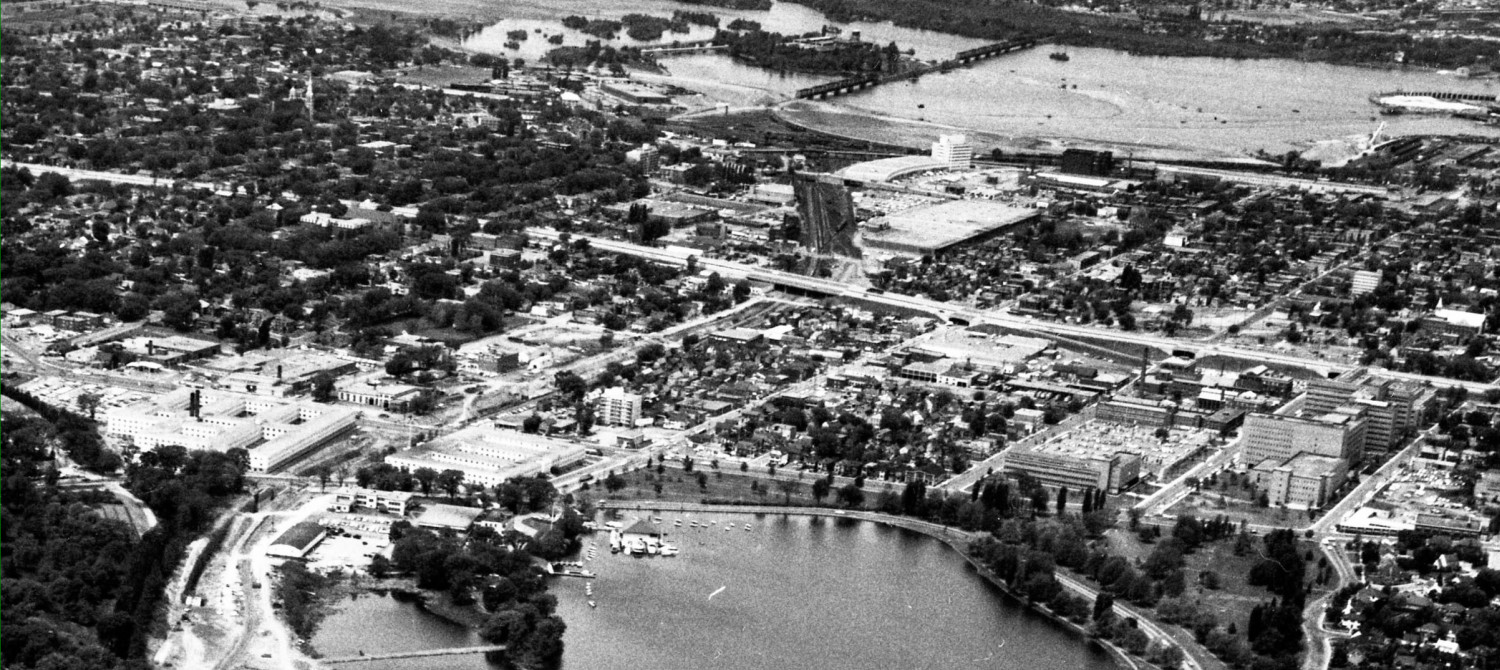The gods of planning wars have unleased their dogs in Little Italy, Chinatown, and West Wellington, key areas in the west side action beat. Lets examine several of the beasts in the pack:
Note how the “common, recognizable” names of the former neighborhoods (Dalhousie, Hintonburg, Mechanicsville) are being replaced by the marketing names of the Business Improvement Associations. These groups — funded by city taxes levied on commercial properties on their behalf — plaster their monikers on lampposts and decorative arches. They ensure the benches, lampposts, and even the very bricks paving the sidewalks contribute to their overall image, theme and identity. Even the municipal artwork that is installed is harnessed to reinforce the branding. Neighborhoods are subsumed into marketing campaigns, funded in part by property tax dollars.
Gentrification takes many forms in the residential streets too. Small corner stores, backyard tile cutters & contractors are replaced by expensive infills. The immigrants that lived in the area for decades move to the suburbs, young trendies move in. Houses that were once cheap in part because they had small properties or lacked parking are bought up by people who convert the lanes into patios and front yards into parking pads. City boulevards continue to be transformed into parking pads for homeowners. Too many infills have front facades that are just garage doors or are otherwise dominated by car storage. They very things that attract them to a neighborhood: front windows, living eyes on the street, people coming and going … are replaced by rear-facing living spaces and garage streetscapes and residents who drive everywhere. To cycle up a street like Roosevelt is enough to make me cry: infill after infill works hard to destroy the fabric that made the street attractive in the first place. Barrhavenification.
Residential apartment towers (“condos”) bring mixed blessings. Presumably they are better environmentally than suburban townhouses, at least that is what the smart growth folks insist. Domicile’s mid rise condos and townhouses off Sherwood Drive will sort of blend into the neighborhood over time. The twelve storey condo on Hickory at Champagne … not so much. The Starwood-Mastercraft 22 and 24 storey condos proposed for the other side of the the Hickory-Champagne intersection — how well will they integrate into a neighborhood? Will many residents really stroll across the hopefully-someday-to-be-built Hickory pedestrian overpass over the Otrain cut so they can use rapid transit and wander the streets of Little Italy? Or will they use their central city location to make shorter drives to the Plant Pool or Elgin Street or longer commutes to Kanata? What is the impact of intensification by $450-700 per sq ft condos on residential neighborhoods that currently sell for $200 per sq ft?
Will the current inhabitants of the areas, especially those of moderate and lower income, be squeezed out? Will they be forced into “projects” like the Gladstone seniors complex or new ones to be built where the city already owns some land (eg Cambridge/Somerset). Neighborhood improvements, such as streetscaping and park reconstruction, bring with them the seeds of major neighborhood changes in who lives where, and what types of shops can be found.
None of these worries are new; they were as true in the past as they will be in the future. The city is a dynamic place, planting seeds of creative destruction. I don’t want a city that is over-regulated or under-regulated, or too homogeneous. Variety works. The trick is how to do it.
Jane Jacobs is dead. She did not retain ownership of her Greenwich Village townhouse long enough to be rich: http://www.nytimes.com/2010/02/21/nyregion/21gentrify.html?pagewanted=1


